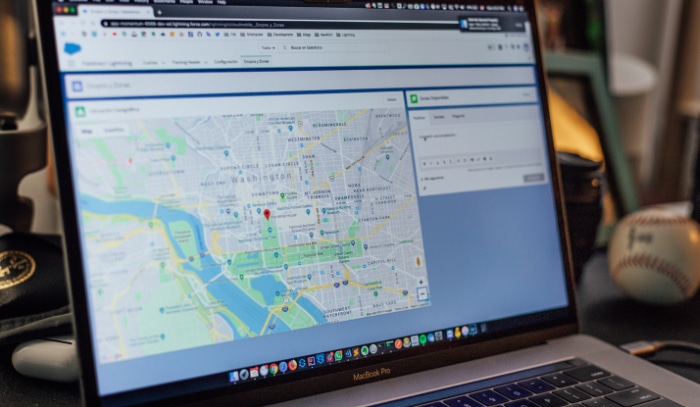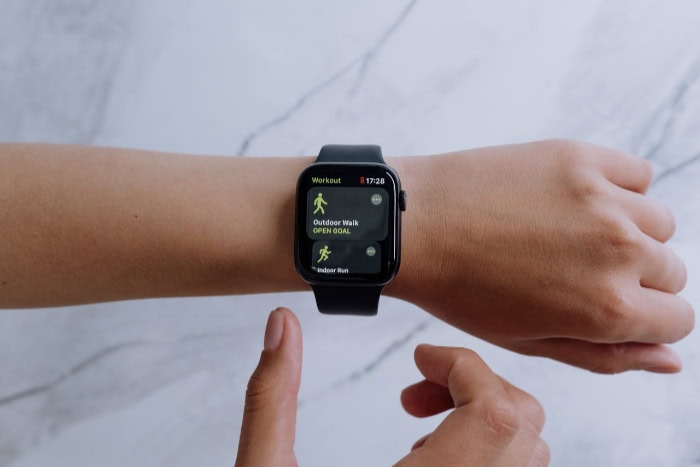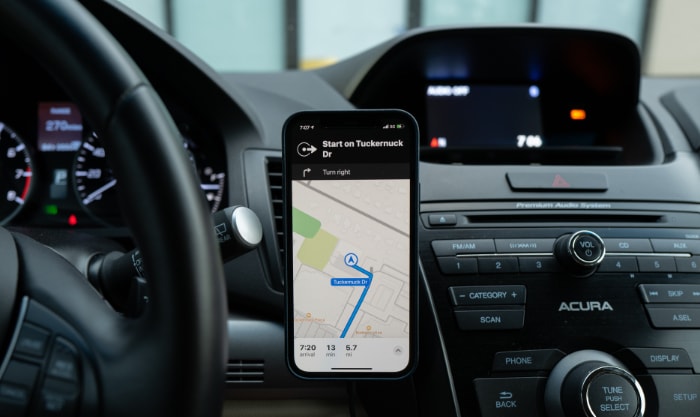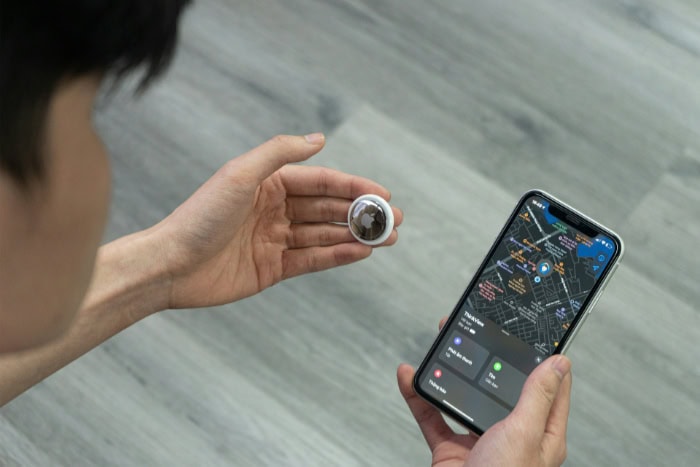What Is GPS Tracking and How Does It Work?

Locating anything, anywhere, anytime—that’s the power GPS tracking brings to modern life. This technology has reshaped how we interact with the world around us, enabling seamless navigation, efficient logistics, and enhanced personal safety.
From ensuring packages arrive on time to helping parents keep track of their children’s whereabouts, GPS tracking has woven itself into countless aspects of daily life.
Its versatility extends far beyond convenience, offering businesses tools to streamline operations while providing individuals with peace of mind through features like emergency alerts and real-time updates. But how does this system work, and what makes it so reliable across different uses?
How GPS Tracking Works
GPS, or Global Positioning System, is built on a constellation of at least 24 satellites orbiting the Earth. These satellites continuously transmit signals that contain information about their location and the current time.
Ground stations monitor the satellites to ensure they remain properly positioned and accurate, correcting any discrepancies when needed.
Receivers, such as those in smartphones, vehicles, and tracking devices, play a pivotal role in GPS tracking by interpreting these satellite signals. To calculate a precise location, the receiver relies on trilateration—a process that uses data from at least three satellites.
By measuring the time it takes for signals to travel from the satellites to the receiver, the device determines its exact position in terms of latitude, longitude, and altitude. Having more satellites in range improves accuracy, ensuring reliable results even in challenging environments.
Data Transmission and Processing
Once location data is obtained, it is sent to software platforms for further processing and display. In the case of real-time GPS tracking, devices transmit this information via cellular networks, satellite communication systems, or other wireless methods to cloud-based systems or dedicated servers.
This enables end-users to view live locations through apps or web interfaces.
Tracking updates can vary in frequency depending on the type of system being used. Real-time GPS trackers provide continuous updates, often every few seconds, making them ideal for applications like fleet management or personal safety.
Conversely, passive systems store location data that can be reviewed later, which may be suitable for asset tracking or mileage reporting. Regardless of the update interval, the data is processed into user-friendly formats through mapping interfaces and dashboards, allowing users to interact with the information effectively.
Key Components of a GPS Tracking System
A GPS tracking system comprises both hardware and software, each contributing essential functions to the overall operation. On the hardware side, GPS trackers are the primary devices that gather and transmit location data.
These trackers come in various forms, including portable devices, vehicle-mounted units, and plug-in systems such as OBD-II trackers, which connect directly to a vehicle's onboard diagnostics port. Wearables, like smartwatches and fitness bands, also incorporate GPS technology for personal tracking purposes.
Software interfaces play an equally important role, providing users with tools to visualize and analyze tracking data. Mapping platforms often feature real-time location markers, route histories, and geofencing capabilities, which allow users to set virtual boundaries.
Advanced analytics dashboards go a step further by generating reports on trends, travel patterns, and performance metrics, empowering users to make the most out of their GPS tracking systems.
Applications of GPS Tracking

GPS tracking has become an indispensable tool across various domains, catering to diverse personal and professional needs. Its ability to provide accurate, real-time location data has made it a valuable asset for industries managing fleets and assets, families seeking safety solutions, and businesses ensuring compliance and operational efficiency.
Fleet and Asset Management
Efficiently managing fleets and valuable assets is a primary application of GPS tracking, offering businesses powerful tools to streamline operations. By monitoring vehicle locations and movements in real-time, companies can optimize routes to reduce fuel consumption and travel time, significantly lowering operational costs.
Fleet managers use GPS trackers to identify traffic congestion or inefficiencies in current routing strategies, ensuring drivers take the most efficient paths.
Beyond operational efficiency, GPS tracking enhances security by safeguarding vehicles and assets against theft or misuse. Devices equipped with geofencing features allow businesses to define operational boundaries and receive alerts if vehicles or assets move outside these zones.
This ensures greater control and faster response in case of unauthorized movement. From construction equipment to delivery vehicles, GPS tracking systems provide businesses with the visibility and tools needed to maintain efficiency, security, and accountability.
Personal and Family Safety
In personal settings, GPS tracking offers peace of mind by enhancing safety for families and individuals alike. Parents rely on GPS-enabled devices to monitor the whereabouts of children or caregivers, ensuring they are where they are supposed to be at all times.
Compact trackers designed for pets help owners locate lost animals quickly, minimizing the risk of harm or prolonged separation.
Emergency features, such as SOS buttons, further bolster personal safety. Devices equipped with these capabilities allow users to send distress signals with their exact location to pre-selected contacts or emergency services.
Whether it is for a child walking home from school or an elderly family member in need of assistance, such features bring a new level of reliability during crises.
Fitness tracking is another popular use of GPS technology in personal applications. Devices such as smartwatches and apps are commonly used to map jogging or cycling routes.
Athletes and fitness enthusiasts use this data to track their progress and set new goals, benefiting from accurate records of distance, pace, and elevation.
Business and Compliance
Professional environments depend on GPS tracking to ensure smooth operations and compliance with various requirements. One notable example is the generation of automated mileage logs for tax reporting and reimbursement purposes.
Rather than manually tracking mileage, businesses can rely on GPS-equipped devices to record every journey with precise details, making the process far more efficient and error-free.
Employee driving behavior is another area where GPS technology has proved invaluable. Businesses equipped with fleet tracking systems monitor driving patterns to promote responsible behavior and reduce liability risks.
Alerts for harsh braking, speeding, or excessive idling encourage adherence to safe practices while also lowering fuel costs and maintenance expenses. GPS tracking provides businesses with measurable insights into compliance and operational standards, making it an essential tool for professional settings.
Benefits and Advantages

GPS tracking offers a multitude of benefits, making it a valuable tool for individuals, businesses, and organizations. From streamlining operations to enhancing security and enabling data-driven strategies, its capabilities go beyond simple location monitoring to deliver practical advantages across various settings.
Operational Efficiency
One of the greatest advantages of GPS tracking lies in its ability to improve efficiency, particularly for fleet management. Companies can reduce fuel costs and minimize idle time by using GPS systems to optimize routes and ensure vehicles take the most direct or traffic-free paths.
Efficient routing not only saves money but also helps teams maximize productivity by completing deliveries or service calls more quickly.
Emergency response times also benefit from GPS tracking technology. When precise location information is available in real-time, responders can be dispatched faster to assist in emergencies, whether providing medical aid or addressing a vehicle breakdown.
The ability to locate issues instantly ensures that resources are allocated effectively, minimizing delays and improving outcomes in critical situations.
Security and Accountability
Security is another significant strength of GPS tracking systems, particularly when it comes to protecting valuable assets and vehicles. Historical location data plays a vital role in recovering stolen property, as it allows law enforcement and business owners to trace the movement of stolen items.
Many GPS trackers also include geofencing alerts, which notify users when an asset or vehicle moves beyond a predefined area, further enhancing protection against theft.
Accountability is equally crucial in industries such as delivery and field services. GPS tracking systems provide transparency by recording the exact locations and times of vehicle arrivals, departures, and stops.
This level of detail not only helps businesses meet service level agreements but also builds trust with customers by offering accurate, real-time updates about service timelines. Clients and stakeholders feel reassured knowing that operations are being monitored and managed responsibly.
Data-Driven Decision-Making
The ability to collect and analyze location data means GPS tracking enables more effective decision-making for businesses and organizations. Travel patterns can be reviewed to identify inefficiencies, such as unnecessary detours or excessive idling, allowing companies to adjust resource allocation for better performance.
These insights are particularly valuable for fleet managers looking to improve overall operational workflows.
Customizable reports are another advantage that GPS tracking systems offer. Detailed performance audits, generated through tracking software, allow managers to review metrics such as fuel consumption, driver behavior, and vehicle usage trends.
Such reports not only simplify operational evaluations but also provide actionable insights that can lead to long-term cost savings and improved productivity.
Challenges and Limitations

GPS tracking has transformed how people and businesses monitor movement and location, but like any technology, it is not perfect. Various challenges, including technical constraints, privacy issues, and practical drawbacks, can impact its reliability and usability.
Technical Limitations
GPS signals, while highly reliable under most conditions, are not immune to interference from environmental factors. Dense urban areas with tall buildings, commonly referred to as “urban canyons,” can block or reflect satellite signals, leading to delays or inaccuracies in pinpointing locations.
Similarly, tunnels, forested regions, or heavy weather conditions can obstruct communication between devices and satellites, reducing the effectiveness of trackers in such environments.
Consumer-grade GPS devices often have a margin of error ranging from 10 to 100 meters, depending on the hardware's quality and external conditions. While this level of precision is acceptable for general use, it may not be suitable for applications requiring pinpoint accuracy, such as high-precision surveying or navigation in densely packed areas.
Advanced systems that offer greater accuracy are available but often come at higher costs, making them less accessible to individuals or smaller enterprises.
Privacy Concerns
GPS tracking raises ethical and legal questions regarding personal privacy. Devices that continuously monitor user locations can become tools for unauthorized surveillance if misused.
For example, employers may overextend their monitoring of employees, potentially crossing boundaries that would otherwise respect personal space and privacy. Improper use of location data could lead to breaches of trust or disputes regarding individual rights.
Compliance with laws and regulations such as the General Data Protection Regulation (GDPR) in Europe or similar privacy frameworks in other jurisdictions is another critical issue. Organizations collecting location data are required to ensure transparency about how data is used, stored, and shared.
Non-compliance can result in legal repercussions and damage to reputation. Individuals and businesses alike must strike a balance between the benefits of GPS tracking and the right to safeguard personal information.
Practical Drawbacks
Practical issues, such as battery life, can also limit the functionality of GPS tracking devices. Portable GPS trackers, smartwatches, or fitness bands often experience fast battery depletion due to the continuous nature of location data transmission, requiring frequent recharging.
This can be particularly inconvenient for users who rely on constant tracking over extended periods, such as hikers or fleet operators.
Costs associated with GPS tracking systems can be another barrier, particularly for those seeking high-precision solutions. Advanced hardware and premium software subscriptions with sophisticated analytics features may require significant investment, which can be a strain for smaller businesses or individual users.
The long-term expenses associated with maintenance, software updates, or connectivity fees further add to the total cost of ownership.
While GPS tracking provides immense value, these challenges remind users that there are circumstances in which the technology may prove less effective or require careful consideration to ensure it is implemented responsibly and efficiently.
Conclusion
GPS tracking has become a vital resource across industries and personal use cases, offering precise location monitoring, enhanced security, and valuable data for improving operations. Its applications range from fleet and asset management to personal safety and business compliance, demonstrating its versatility in addressing diverse needs.
While the technology delivers numerous benefits, such as greater efficiency and accountability, challenges like signal limitations, privacy concerns, and practical drawbacks should not be overlooked. Balancing these factors ensures responsible and effective use in any scenario.
By combining advanced satellite systems, smart hardware, and intuitive software, GPS tracking continues to shape how individuals and organizations manage movement and location. Its ability to enhance safety, streamline processes, and provide actionable insights makes it an essential tool for a connected and efficient future.


